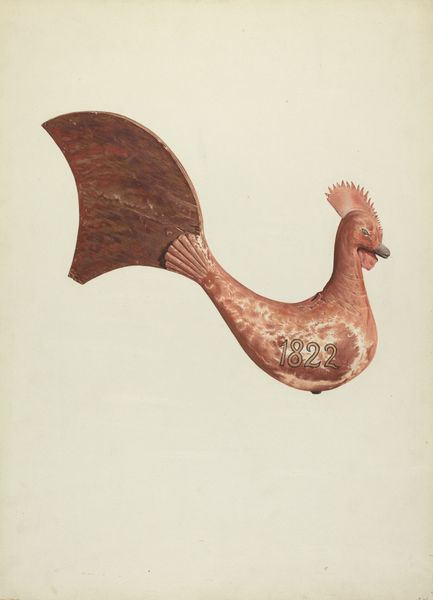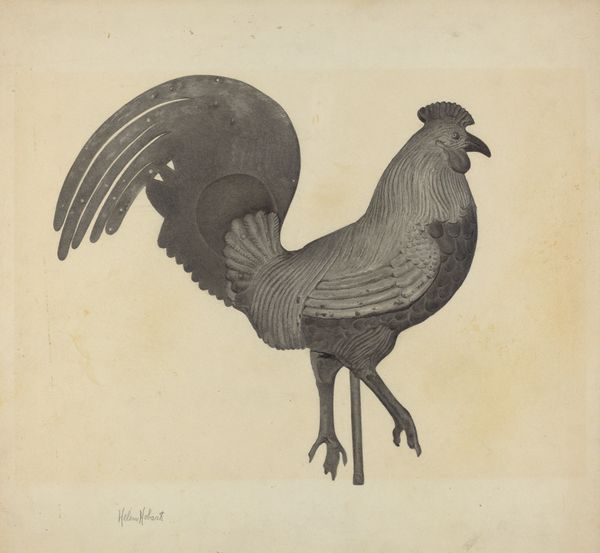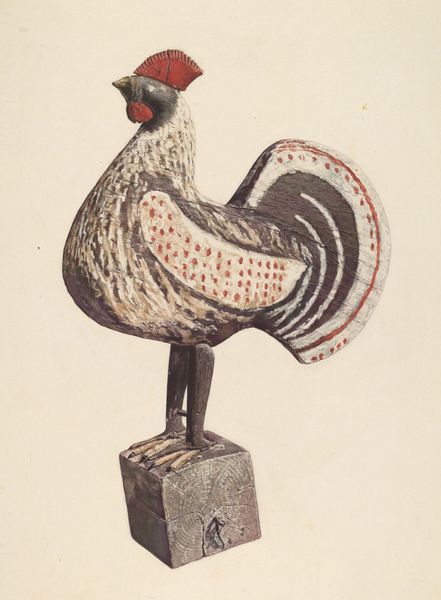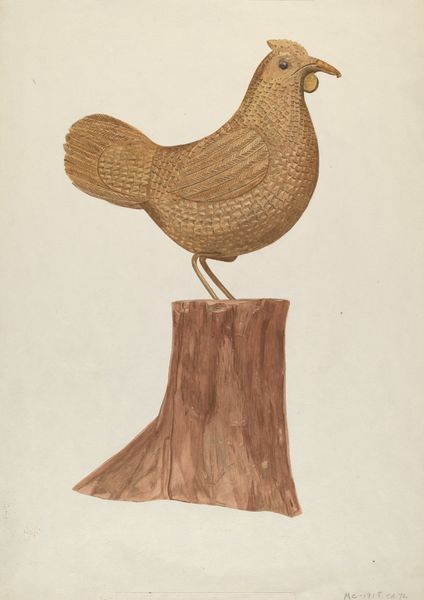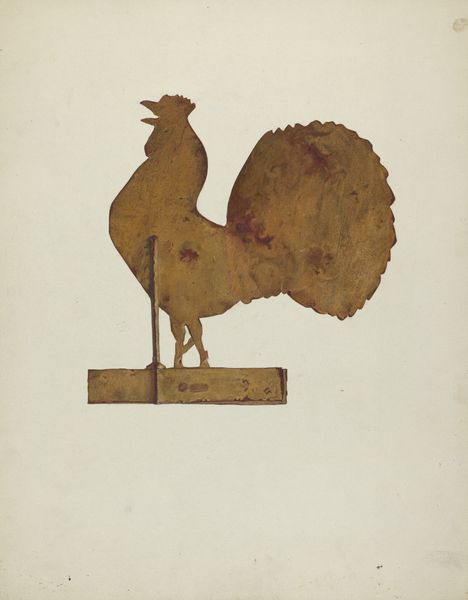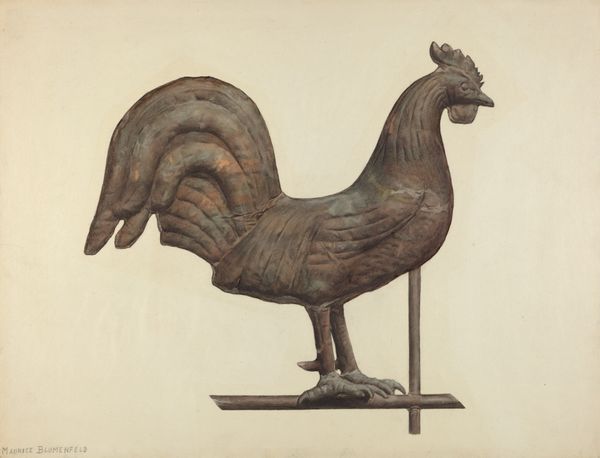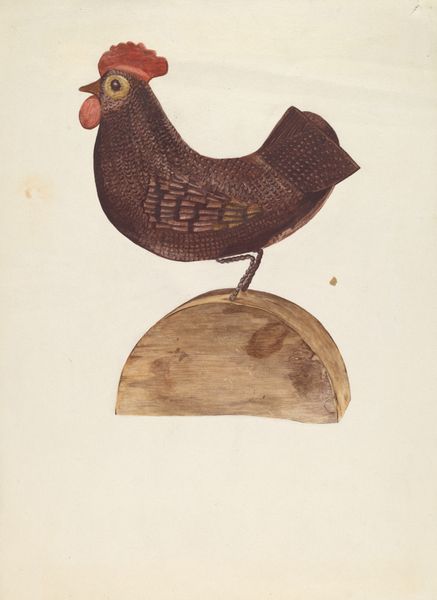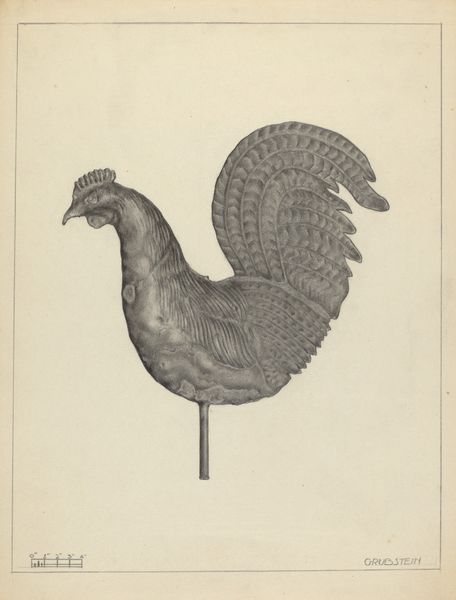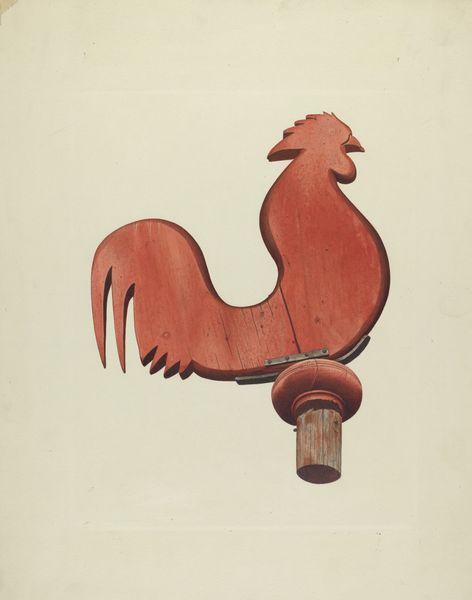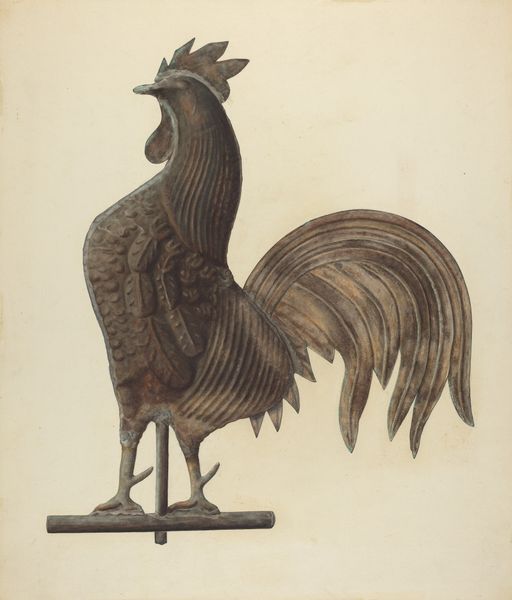
drawing, watercolor
#
drawing
#
watercolor
#
folk-art
Dimensions: overall: 29.2 x 21 cm (11 1/2 x 8 1/4 in.) Original IAD Object: 29" high; 23 1/2" wide
Copyright: National Gallery of Art: CC0 1.0
Curator: Right, let’s have a look at Carl Strehlau’s “Weather Vane Rooster,” dating to about 1940. It's watercolor and drawing on paper. What strikes you first about this piece? Editor: Its handcrafted, folksy appeal jumps out immediately. There’s a clear connection to rural life; it’s not just a picture of a rooster, but a functional object reinterpreted, abstracted on paper. Curator: Absolutely. Roosters as weather vanes have long served as symbols of vigilance and heralds of a new day. In many cultures, the rooster is associated with courage, pride, even resurrection, signifying spiritual awakening. Does this artistic representation convey similar symbolic ideas to you? Editor: It's fascinating to see it through that lens. However, I also can't ignore the artistic *process* behind this image. The strokes, textures of watercolor—imitating rustic weathering of an object exposed to the elements and made by human hands. We’re looking at not just a symbol, but at an engagement with a pre-existing object that carries all those qualities already, due to its original existence as part of working life and environment. Curator: So the folk art association goes beyond theme here and extends to method... The slightly naive rendering speaks to the ethos, too; a lack of pretension which serves to give its intended values authenticity, wouldn't you agree? Editor: I see what you mean about the naivety being related to process, but what about thinking about the consumer and the cultural value judgments applied to fine art against something mass-produced versus something crafted individually, such as this? How that labor intersects with identity? Curator: A valuable insight. Thinking about labor brings us closer to recognizing that this drawing embodies cultural memory of skills—passed-down through generations, that are celebrated through forms, shapes, and colors of an era, all preserved on paper through an accessible medium like watercolor. Editor: Exactly. The choice of medium itself mirrors accessibility of weather vanes, how often people might interact with such objects—versus "high art" painting locked up within grand halls, exclusive collections, etc. That interplay with social access plays key importance for a work rooted within everyday symbolism rather than those high cultural concepts exclusively. Curator: Indeed, we both appear to be touching upon an intersection between daily routines/customs imbued through communal values signified within an artistic interpretation from the common object depicted here—a Weather Vane Rooster rendered on paper. Editor: Precisely, offering up layered appreciation: symbol, materiality, consumption interwoven!
Comments
No comments
Be the first to comment and join the conversation on the ultimate creative platform.
